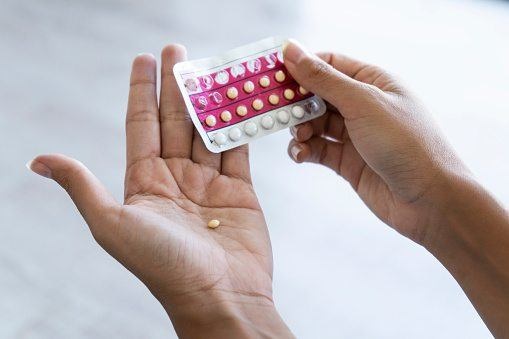We can support you in several ways
The Cervical Screening Test looks for human papillomavirus (HPV) which is a common virus that can cause changes to cells in the cervix, which in rare cases can develop into cervical cancer. By detecting a HPV infection, healthcare providers can monitor their patients earlier, and intervene if the infection causes changes to cells in the cervix. The cervical screening test is your best protection from cervical cancer. However, it does not screen for other cancers such as ovarian or endometrial cancer.
What are the steps to get tested?
A GP can perform the cervical screening test. Follow the steps below to get started.
1. Select a GP
If you choose a GP within our Choice network, there are no out-of-pocket expenses.
If you choose to see a GP outside of our network, we will reimburse you 100% of the Medicare Benefit Schedule (MBS) fee however if your GP charges more than the MBS, you will be required to pay the difference.
2. Make an appointment
If you prefer to see a female GP, please let the receptionist know and let her know that you require a cervical screening test. Ask for the cost of the visit and for the test.
3. On the day
If you are visiting a GP within our network, remember to bring your CBHS International membership card and photo ID. Some of our clinics within our network, will charge the cost back to us whereas some of them require you to pay upfront and you will need to submit a claim to us.
For the cervical screening test, you will need to keep the receipt and make a claim.
4. Test and results
Your doctor will perform the test and send the test to the laboratory. They will let you know how you will receive the results.
5. Submit a claim
To make a claim, take a photo of your receipts using your phone camera and upload them to the CBHS International mobile app:
- GP visit
- Cervical screening test
What to expect on the day?
It is a simple test where you lie on your back with your knees bent, the doctor or nurse inserts an instrument called a speculum into your vagina so they can see the cervix. Then they use a brush to take a sample of cells from the cervix. This sample is sent to a laboratory to be analysed. Your doctor will talk to you about the results.
How much will a cervical screening test cost?
The cost is roughly between $100 and $110. For a more accurate costing, ask for the cost when you are making a booking with your GP.
Does my OSHC cover the cost of testing?
Yes. We cover 100% of the Medicare Benefits Schedule (MBS) however if the GP charges more than the MBS rate – you will have to pay the difference.
Breast awareness – noticing changes
The most effective method of early detection of breast cancer in women aged under 40 is breast awareness.
Breast awareness means women (and men) becoming familiar with the look and feel of their breasts.
If you are familiar with the look and feel of your breasts you will be able to pick up any unusual changes early. This could be a new lump, thickening in one of your breasts, changes in the shape or size of your breast or changes in the shape of your nipple.
It is important to remember that any changes you notice are generally not caused by cancer and could be a result of other conditions. If you do notice any changes in your breasts it is important to speak to a GP. The GP may refer you for breast screening.
You can also use the iPrevent breast cancer risk tool to estimate your breast cancer risk and get personalised advice about the type and frequency of screening that might be appropriate for you. For those who have a family history of breast cancer, learn more here.
Breast screening
Breast screening (mammography/mammogram) is a low dose x-ray examination of your breasts. It can sometimes detect breast cancer before there are any signs or symptoms (such as a lump you can feel). Screening mammograms aim to find breast cancer early, when treatment is likely to be most successful.
It is recommended for women aged 40 and over, for those who have a family history of breast cancer and for anyone who has been recommended by their GP to start breast screening. If you are concerned that you are at risk, you need to discuss this further with your GP.
What are the steps to get tested?
Follow the steps below to get started.
1. Select and visit a GP
Select your GP. You will ask for a referral for breast screening at the appointment. You can also visit a GP within our network.
If you choose to see a GP outside of our network, we will reimburse you 100% of the Medicare Benefit Schedule (MBS) fee, however if your GP charges more than the MBS, you will be required to pay the difference.
2. Make an appointment
Once you have your referral, make an appointment at the recommended clinic. Ask for the cost for the screening.
3. Attend breast screening
Have your breasts screened.
4. Submit a claim
To make a claim, take a photo of your receipts using your phone camera and upload them to the CBHS International mobile app:
- GP visit
- Breast screen
How much will a breast screening cost?
The cost is roughly between $300 and $700. For a more accurate costing, ask for the cost when you are making a booking with your breast screening clinic.
Does my OSHC cover the cost of breast screening?
Yes. We cover 100% of the Medicare Benefits Schedule (MBS). If the amount the medical provider charges is more than the MBS, you won’t be able to claim that amount.
If you would like to be certain of the costs before the breast screen:
Ask the breast screening clinic for the Medicare item numbers for the test and how much they will charge.
Contact us and let us know the item number and the cost. We can tell you how much will be covered for under your policy.



